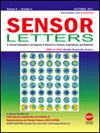Development of a New Nontoxic Thiazole Derivative Dye for Cell Labeling by Using Nanoparticles
引用次数: 0
Abstract
Fluorescent labeling of L-929 fibroblast cells was studied by using newly synthesized ligand which was named as 2- N -methylamino-5-(pyrene-1-yl)-thiazole (ABS 40). The maximum fluorescence intensity of ABS 40 was detected at an excitation and emission wavelengths of 350 nm and 400 nm. Fluorescence intensity of the ligand was changed by the addition of DNA from calf thymus (CT-DNA) and human serum albumin (HSA). Both biomolecules and ABS 40 formed complexes that changed the fluorescence intensity of the ligand at the given wavelengths. Cytotoxicity tests were done with XTT analysis. L-929 fibroblast cells were cultured in the presence of ABS 40 to show cell labeling. Results showed that ABS 40 at 318 μM was labeled the cells at an excitation wavelength of 403.7 nm by using confocal microscopy. in vivo cell labeling was also confirmed by using Ct-DNA immobilized iron nanoparticles.新型无毒噻唑衍生物纳米细胞标记染料的研制
采用新合成的2- N -甲氨基-5-(芘-1-基)-噻唑(ABS 40)配体对L-929成纤维细胞进行荧光标记研究。ABS 40在激发和发射波长分别为350 nm和400 nm时检测到最大荧光强度。通过加入小牛胸腺DNA (CT-DNA)和人血清白蛋白(HSA)改变配体的荧光强度。生物分子和ABS 40形成的复合物改变了配体在给定波长下的荧光强度。细胞毒性试验采用XTT分析。L-929成纤维细胞在ABS - 40的作用下培养,显示细胞标记。结果表明,在共聚焦显微镜下,318 μM的ABS 40在403.7 nm的激发波长下被标记。用Ct-DNA固定铁纳米颗粒也证实了体内细胞标记。
本文章由计算机程序翻译,如有差异,请以英文原文为准。
求助全文
约1分钟内获得全文
求助全文
来源期刊

Sensor Letters
工程技术-电化学
自引率
0.00%
发文量
0
审稿时长
6 months
期刊介绍:
The growing interest and activity in the field of sensor technologies requires a forum for rapid dissemination of important results: Sensor Letters is that forum. Sensor Letters offers scientists, engineers and medical experts timely, peer-reviewed research on sensor science and technology of the highest quality. Sensor Letters publish original rapid communications, full papers and timely state-of-the-art reviews encompassing the fundamental and applied research on sensor science and technology in all fields of science, engineering, and medicine. Highest priority will be given to short communications reporting important new scientific and technological findings.
 求助内容:
求助内容: 应助结果提醒方式:
应助结果提醒方式:


